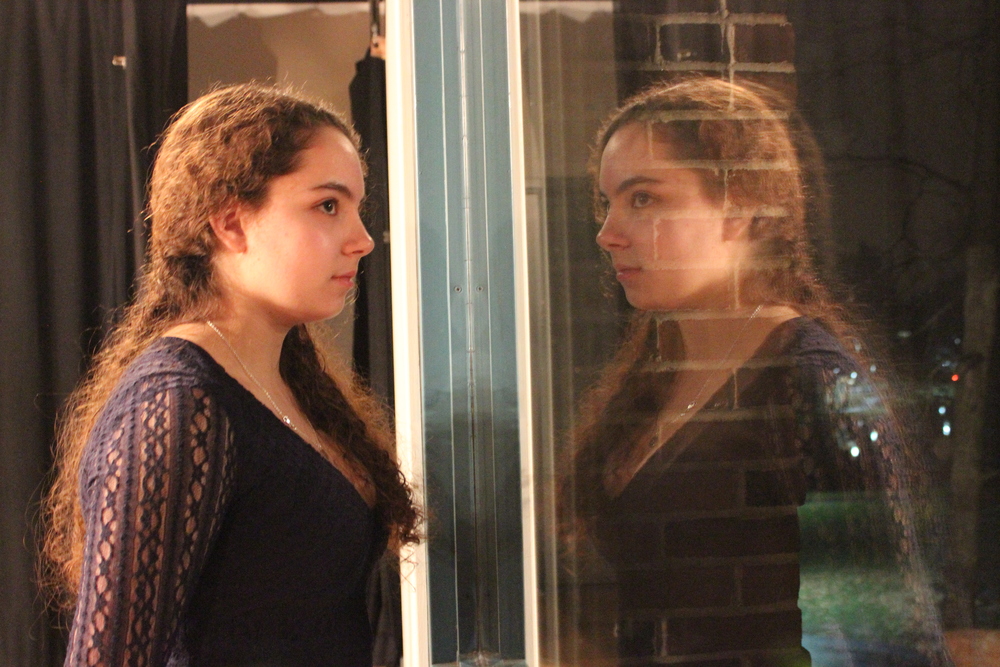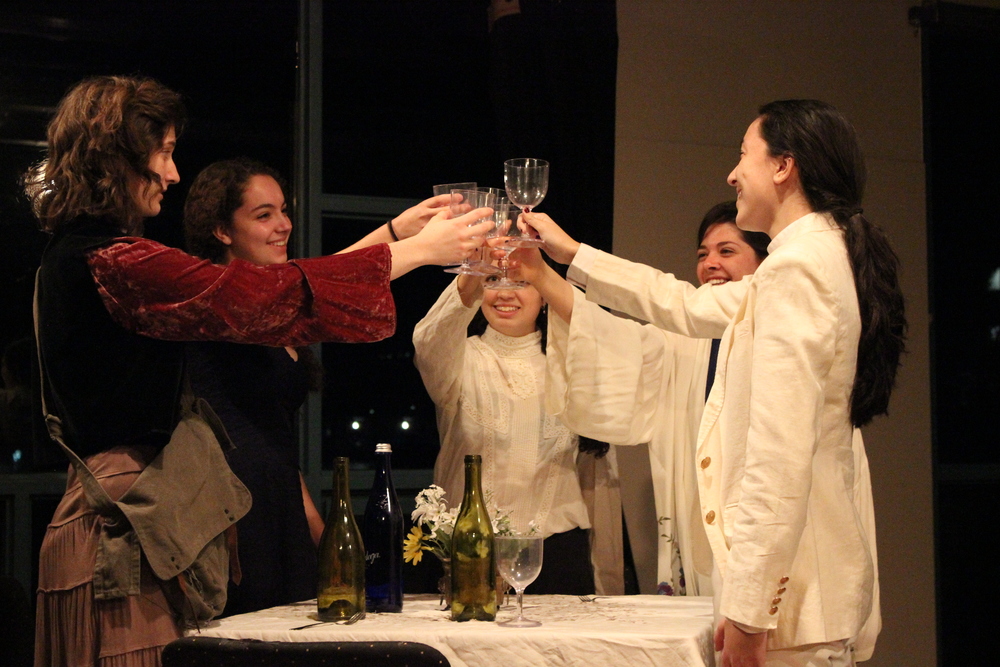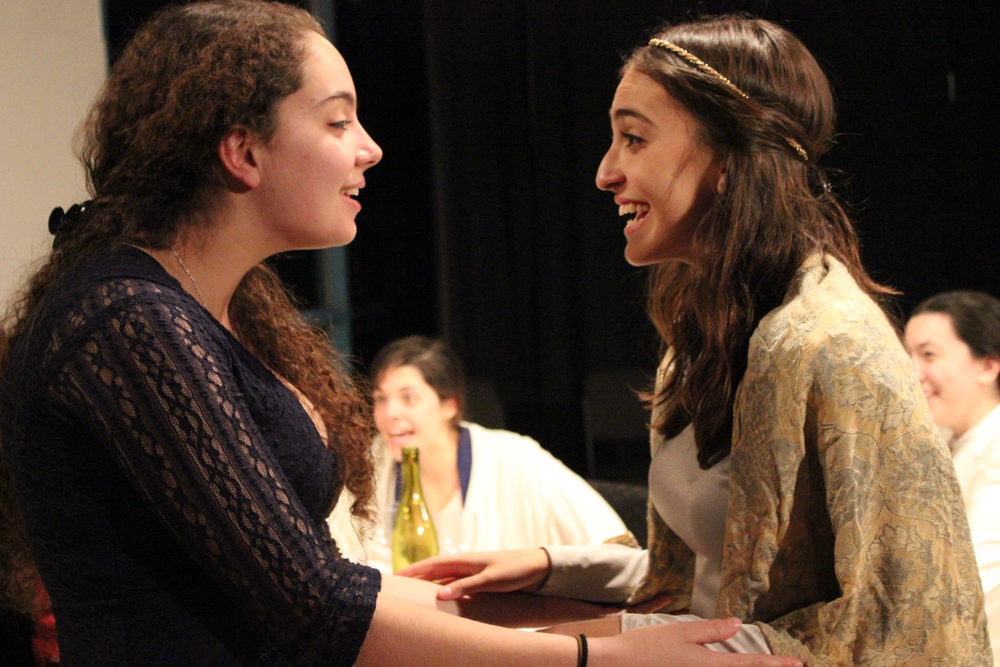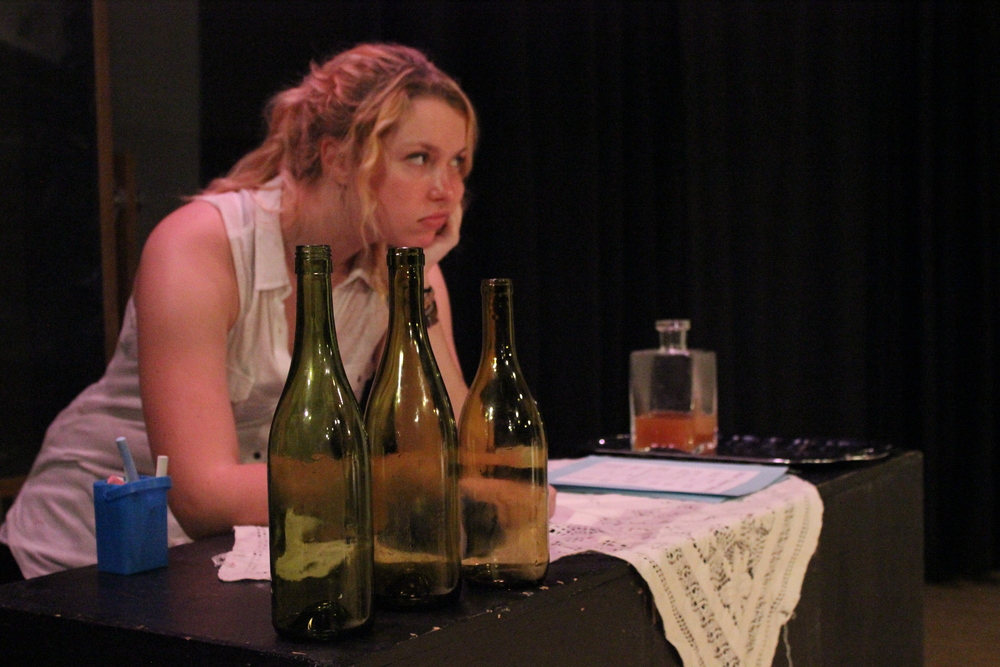
Kirsten Mulrenen ’18
From Middle Ages To Modern Day
By: Rachel Karp ’18
As audience members, we were thrust into the world of the play before we even entered Studio A. Stage Manager/Hostess Daphne Preti ’16 arrived in the lobby to escort us to our seats, which were arranged in small clusters around a large circular table in the center of the room. Strings of lights lined the walls and classical music played softly in the background as we settled into our seats, doubling both as restaurant guests and audience members of a theater-in-the-round style production.
So began the production of the first act of Caryl Churchill’s Top Girls directed by Joan Lawson ’15. Top Girls chronicles a dinner party hosted by Marlene (Kirsten Mulrenen ’18), who is celebrating a recent promotion at work. The guests, however, are no ordinary individuals; they are all renowned women from history and fiction. The invitation list consists of Isabella Bird (Emmy Kuperschmid ’16), 19th century English explorer; Lady Nijo (Molly Burdick ’17), 13th century concubine to the Japanese emperor, Dull Gret (Hallie Christine ’15), the subject of the famous painting “Dulle Griet”; Pope Joan (Rebecca Rovezzi ’18), a woman who, disguised as a boy, became Pope in the middle ages; and Patient Griselda (Daniella Deutsch ’17), a peasant girl chosen to be wife to the Marquis in Chaucer’s Canterbury Tales.

Hallie Christine ’15, Kirsten Mulrenen ’18, Emmy Kuperschmid ’16, Molly Burdick ’17, and Rebecca Rovezzi ’18
As the guests arrive one by one, they all begin to share their stories: tales of deceased lovers and lost children. Throughout the play there is a subtext of what it means to be a woman in each of their respective time periods and geographical locations. This subtext was clearly and intentionally brought out over the course of the rehearsal process. As Kuperschmid explained, “This is a show about women, so we started our rehearsal process talking about that; what it means to be a woman, feminism, female friendships, and how we personally relate.” This discussion during the rehearsal process showed in the final production. The personal, political and historical meanings of the play were in no way lost amidst the characters’ fast-paced dialogue and compelling stories.
Though she never speaks, a waitress (Samantha Grant ’18), bridges the gap between these historical and fictional figures and the audience. Grant explained that she felt her character acts “as sort of a voice for the audience, or some sort of ‘normalcy’ within the dinner context” because of the way she interacts with both the dinner guests and the audience.

Kirsten Mulrenen ’18 and Daniella Deutch ’17
The play’s ending was one that had audience members quite literally jumping out of their seats. The moments leading up to the production’s conclusion reached a peak with Lady Nijo crying under the table and Dull Gret not-so-subtly slipping everything from silverware to wine glasses into her bag before storming out. Moments later, a blood-curdling shout was heard from outside. It quickly became evident that this scream came not from a disruptive passerby but from Dull Gret herself. One by one, the other guests at the dinner party exited Studio A and joined Dull Gret in the parking lot below, shouting up at us, and one by one, audience members got up from their seats and moved to the windows to watch.
Before long, only Marlene and the waitress were left onstage, mirroring the start of the play. “[This action] at the end isn’t from the script, it was something [the cast and director] developed out of an exercise,” explained Kuperschmid. This unique conclusion gave the audience a satisfying sense of closure that may have otherwise been missing given it was only the first act being performed. As the waitress cleared the remaining dishes off the table, the audience slowly slipped back into reality from the carefully constructed, fascinating, emotionally charged world of the play.

Sam Grant ’18
This article originally appeared in print in the Fall 2014 Skidmore Theater Newsletter.
